No products in the cart.
Table of Contents
A vacation or a hectic schedule is a culprit for forgetting to water your plants. Next thing you know, they’re already dying or starving for water, and it’s too late for you to revive them.
Sad isn’t it? What do you usually do? You run to your nearest nursery and replace the ones you have lost, or even buy more that you like, and promise yourself not to neglect them ever again.
Well, my friend, being forgetful is not a crime. The solution is to invest in self-watering stakes or OPT FOR HEALTHY SUCCULENTS.
Succulents are lovely cuties and don’t require frequent watering due to their stem and leaf structures that can store water. And the most important thing is they’re easy to grow and low-maintenance indoor houseplants.
So cheer up as we provide you with a list of easy-to-care yet adorable succulents you can start growing.
10 Top Indoor Succulents to Grow Indoors

Having a unique succulent indoors makes any place look alive. But, they are not fussy at all when it comes to watering, as too much moisture can lead to root rot. So, if you forget to water them, they will not hold it against you.
Here you can find some of the most exquisite succulent species to place around the home.
Sedum morganianum

The Burro’s Tail, or as some people call it, the donkey’s tail, is a trailing succulent that looks fabulous in hanging baskets. You can place them in a container on the ledge of a shelf or in a plant stand. The stems can grow up to three feet long.
The leaves are gray-green the size of a grain of rice and have a pale sheen that suddenly disappears when you wipe it showing your fingerprints. Still, the leaves are very fragile and can fall off easily. So, best not to handle the leaves a lot.
The plant is native to Mexico, and when it comes to growing healthy succulents indoors like the Burro’s Tail, it is not difficult. Give it bright light exposure and let the soil dry out between watering. The ground needs to go through dry spells during winter as it is dormant.
Leaving the soil dry is essential if you live in cooler temperatures and fertilize them with a cactus fertilizer in summer.
Sempervivum tectorum
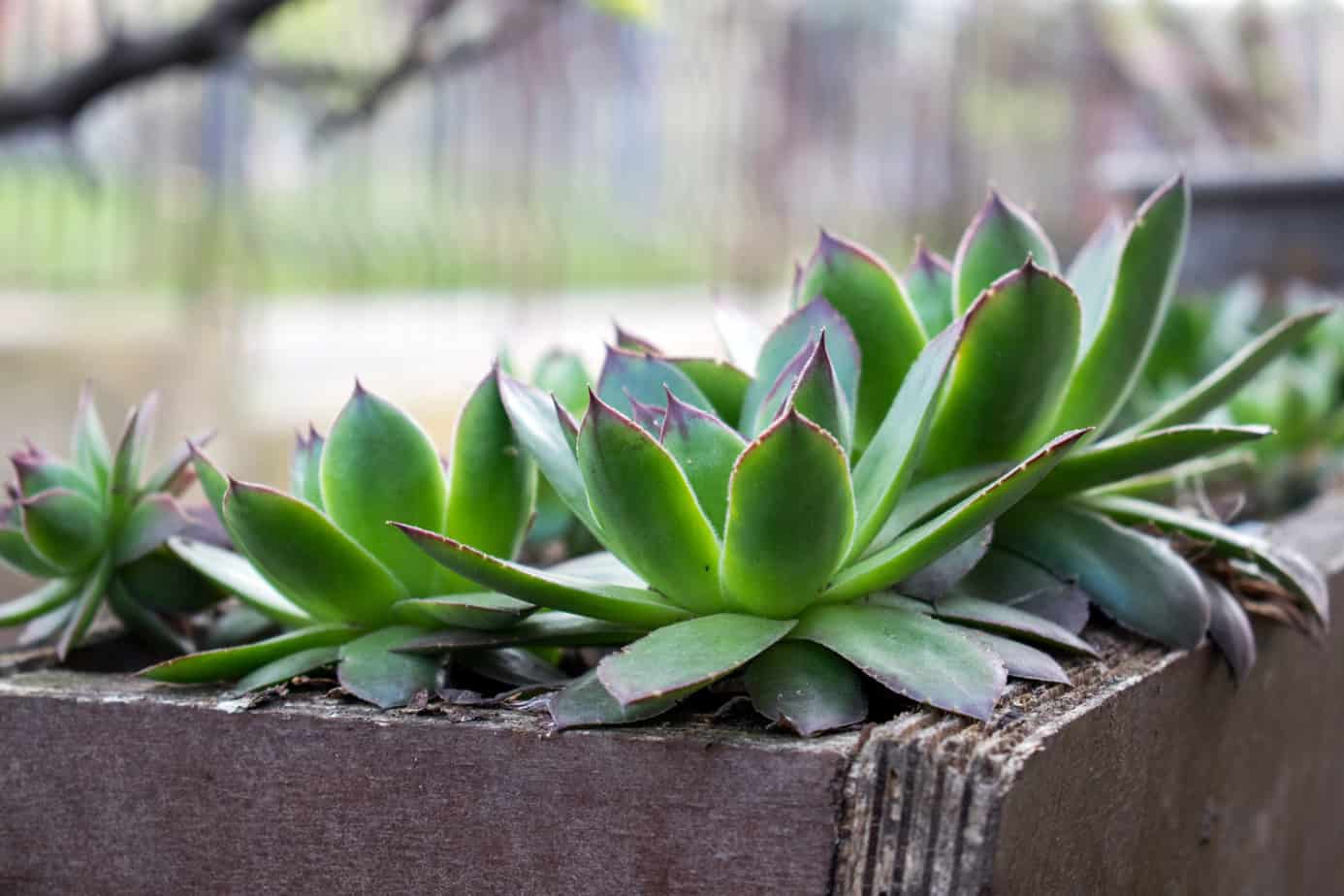
Interestingly, the two plants are closely related, with both having the same common name, hens, and chicks. Both produce identical small plants with a slight offset related to the mother. The one we have here is Sempervivum tectorum and not the Echeveria elegans.
The plant succulents form rosettes with flat leaves but are slightly pointed. You find it in various assortments with star-shaped flowers in vast colors. The important thing is to provide a container with drainage holes to allow the excess water to drain freely.
As with most succulents, you need to leave the soil dry in between watering. You can place it near a window with bright light. But if you do not have a sunny spot, light shade is okay. You can even make sure you have enough of these plants propagating the chicks.
Crassula ovata
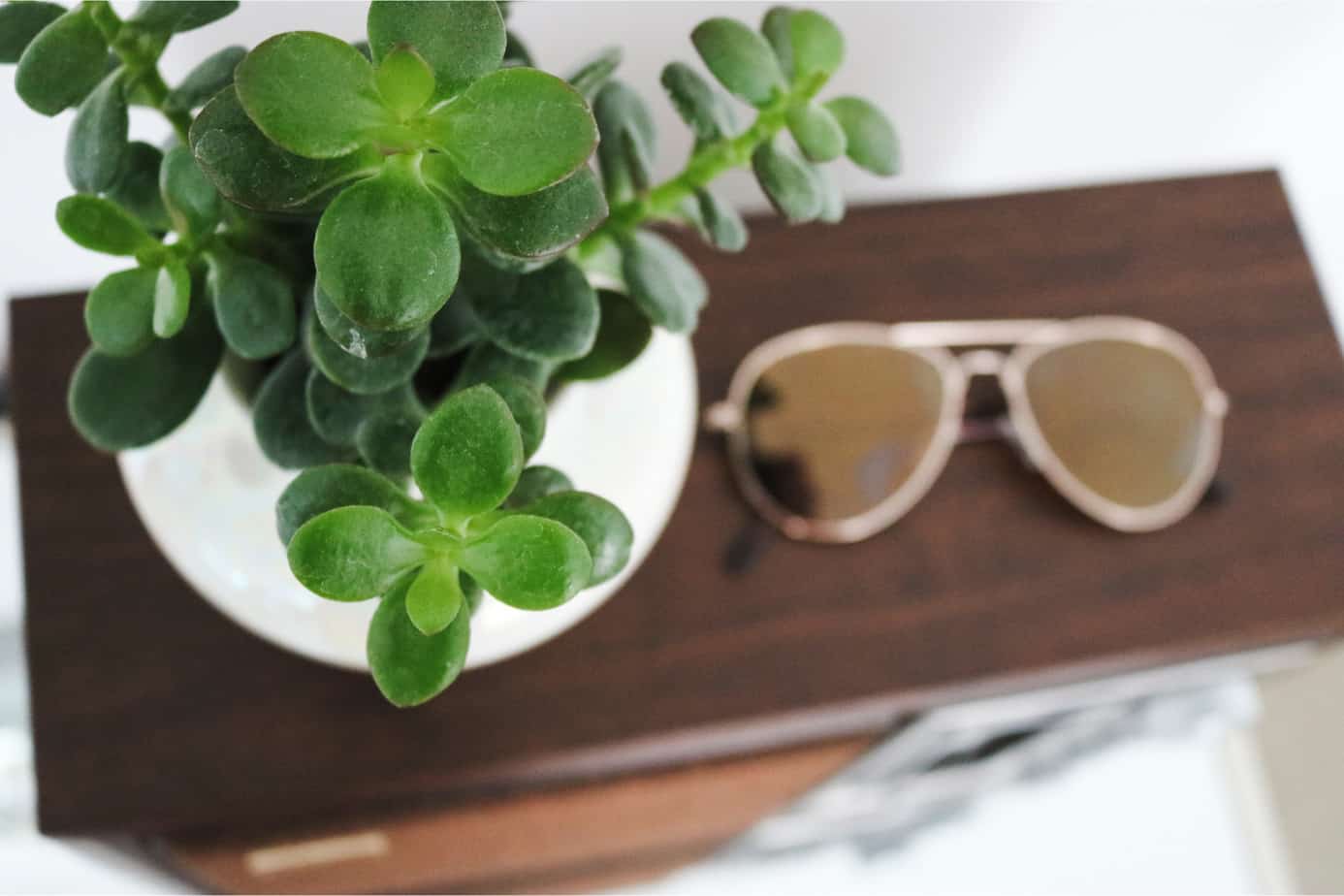
The Jade plant is an old-time favorite as it is a cinch to grow. It is a South African native growing with thick stocky branch stems. The leaves are glossy and sometimes tinged with red. You find different varieties growing in direct sunlight.
As the plant matures, it can grow tall, but it only grows to a foot tall as a houseplant. Another notable thing is they grow top-heavy and best to grow them in a terra cotta pot. Finally, leave the soil to dry between watering, and you will keep your plants healthy.
Haworthia fasciata
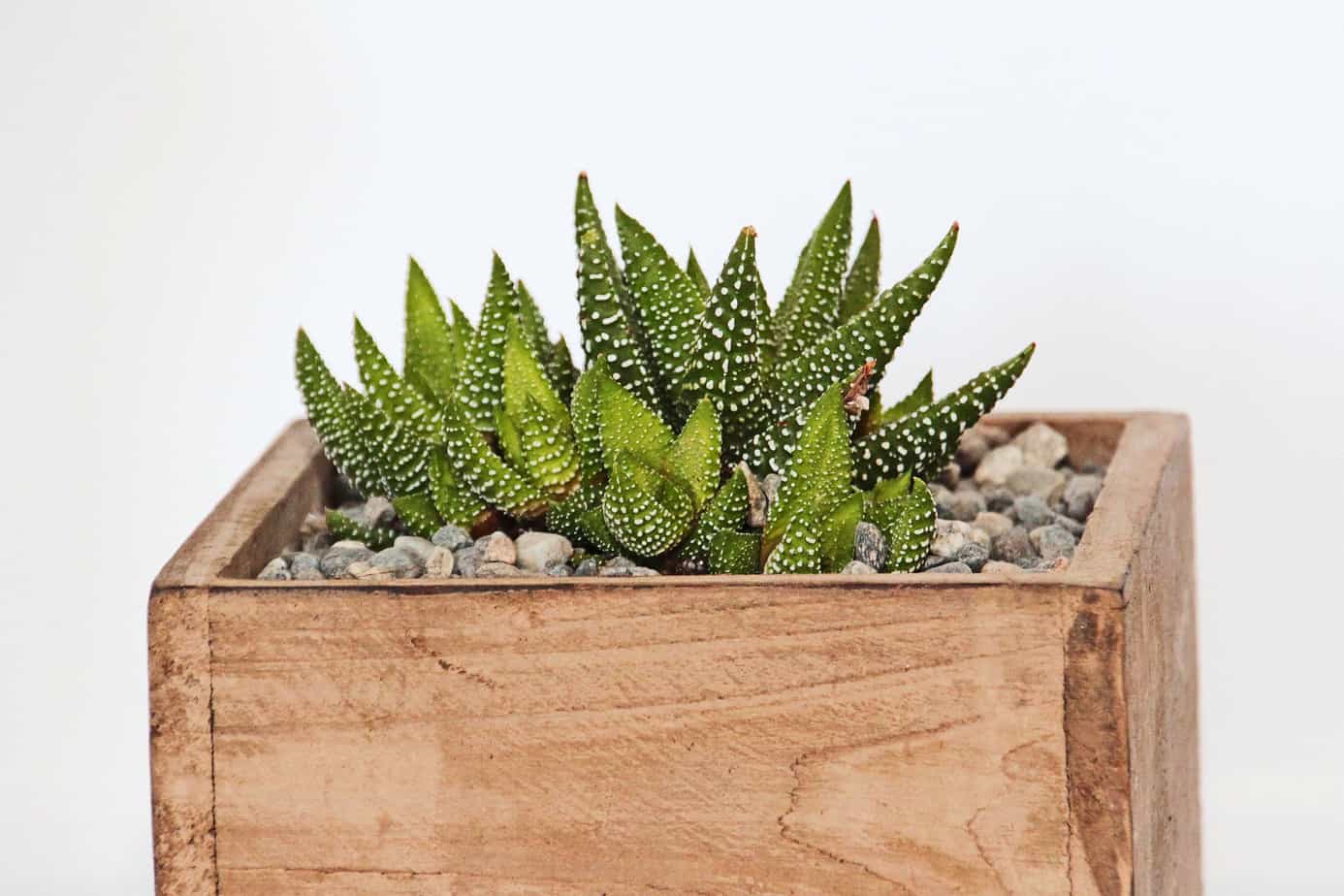
Yes, you may think the zebra cactus is a rare plant. But you find them at your local garden center and online. It is perfect for indoor growing and comes from Africa. The plant perches on top of the soil with striking stripes on the spiky foliage.
It is an easy-going succulent with low maintenance. Set it at a window to get bright indirect sunlight every day, and it is its happiest. Still, never expose the zebra leaves to direct sunlight as they will wilt.
You can even grow it alongside other indoor succulents in a terrarium. It takes up a small space in a shallow pot. Leave the ground to dry between watering as it is essential for most succulents.
Schlumbergera x buckleyi
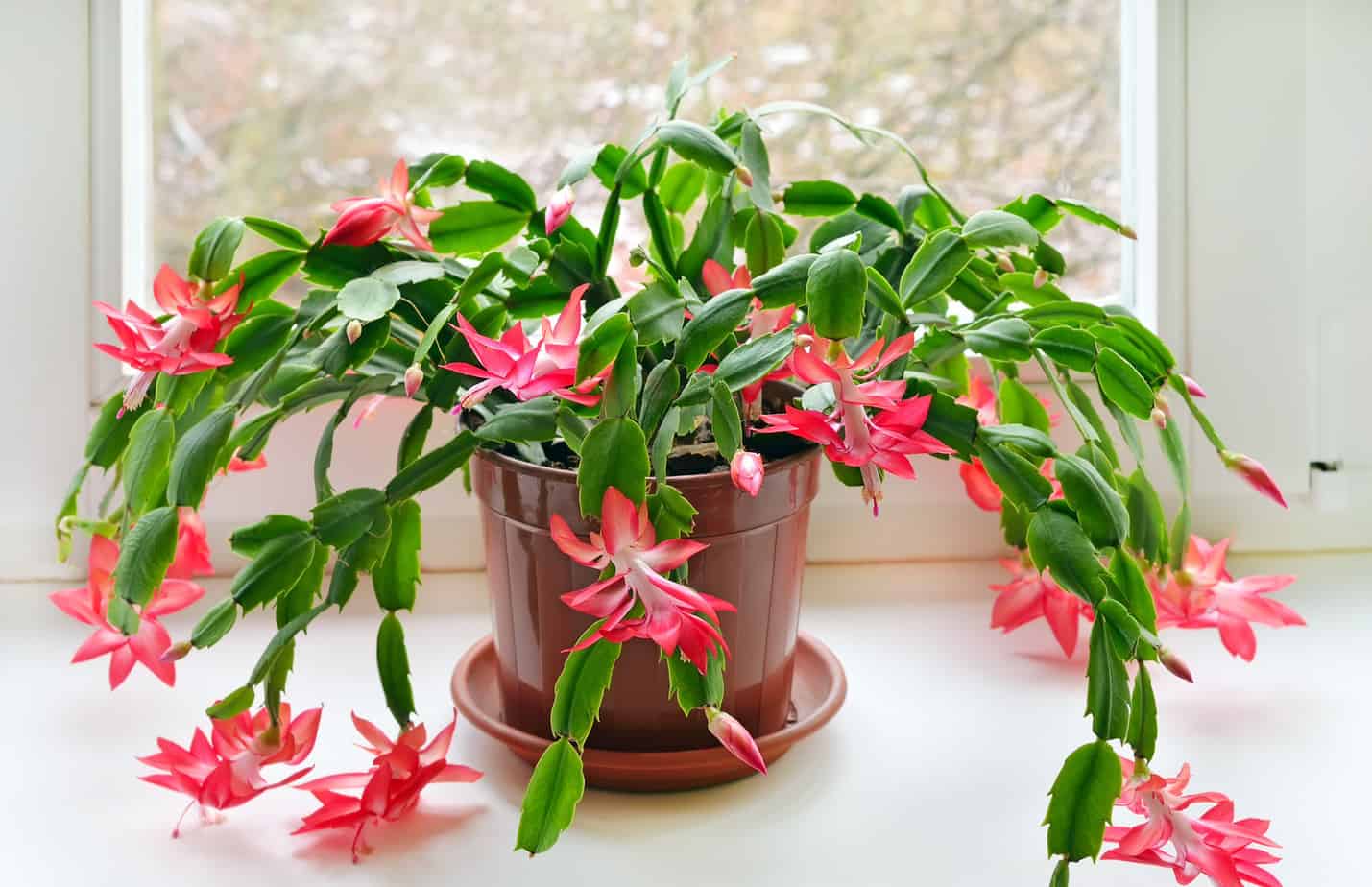
Nope while it has the name cactus, it has no sharp spines. Instead, it has flat, fleshy leaves, with a segmented stem reaching a few feet in length. There are times it looks like it is draping over earning the name crab claw cactus.
When it comes to watering succulents, you hear us saying to leave the ground dry. But it needs a bit more moisture when it comes to this plant. So the rule of thumb is to water this cactus when the top of the ground is dry.
It can handle drought spells for a little while, and when you quench its thirst, it bounces back. These succulents prefer bright light placed at a window and might even reward you in winter with blooms.
Kalanchoe tomentosa

Add a fresh touch to your living space with the thick fuzzy blue-green leaves of the panda plants. The native Madagascar succulent also has tipped brown rust-colored spots. These succulents indoors thrive in a lot of sun exposure and are great to place on windowsills.
These indoor plants can reach about two feet tall but are slow growers. The same rule applies to no watering before the ground is dry. Also, do not let the foliage wet when watering as it can rot. Kept evenly moist without waterlogged soil, they are happy chappies.
When growing succulents like the panda, you can feed them once a month during the growing season with fertilizer. Also, keep the plant away from drafts and cold as they do not like it.
Aloe vera
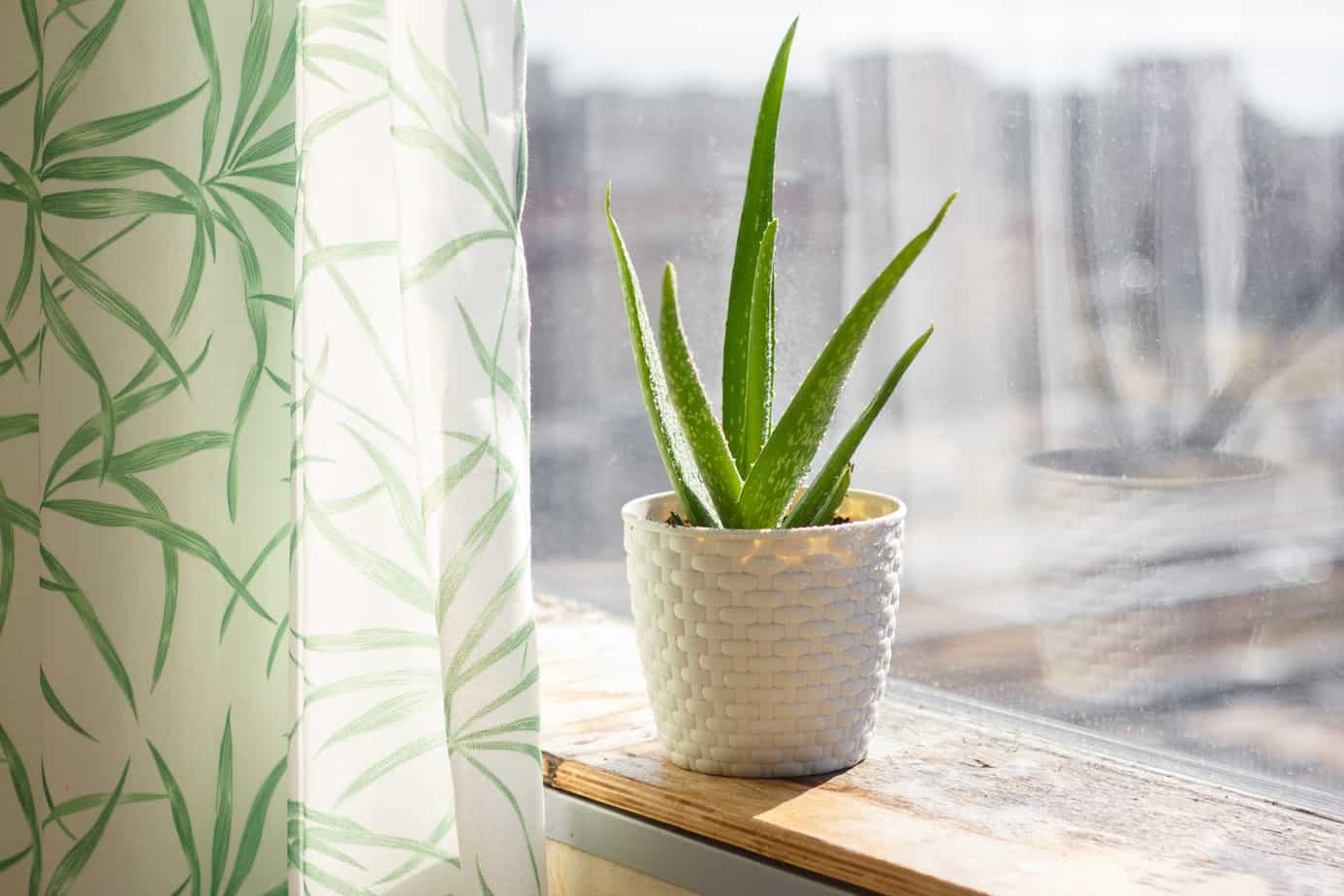
Now, looking through all the plants and choosing succulents for your indoor living space is difficult. Then we recommend this medicinal plant with clusters of slender leaves and a short stem. With time the clumps become more filling the whole container.
When it comes to propagating succulents, the Aloe is easy by dividing them to grow in their pots. The foliage has sharp teeth along the edges that can cut you passing by. It is easy to grow and tough to kill. It prefers to be dry compared to damp soil.
Indoor conditions are ideal for this plant if placed near a sunny window. Aloe vera thrives in hot, dry climates. Bright light at home and necessary watering make your plant happy.
You can fertilize succulents like the Aloe twice during the growing season with 10:10:10 fertilizers. You can fertilize succulents like the Aloe twice during the growing season with 10:10:10 fertilizers.
Sansevieria trifasciata

The snake plant is a definitive houseplant that is almost imperishable. Keeping these succulents alive is easy, and they can go without water and light for a long time. The best part is without too much moisture, they still look great.
The pointed leaves are stiff, growing straight up and reaching three feet long. You can find them with patterned markings like a snake. They multiply, forming thick clumps filling the whole container with time, and dividing them is easy.
The snake plant can tolerate low light but prefers medium to bright light, and with a bit of moisture, they go a long way.
Curio rowleyanus
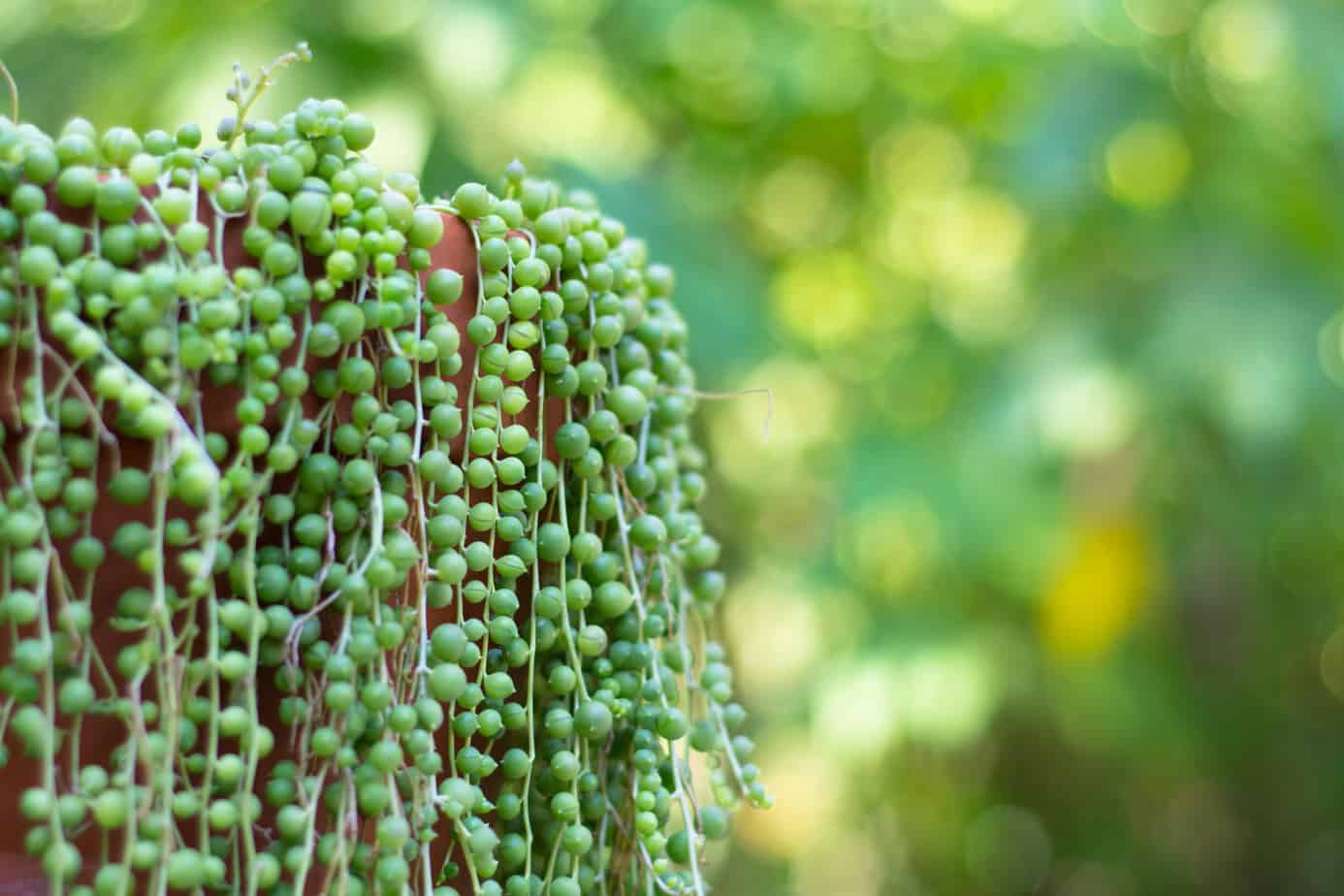
The string of pearls succulent is an exceptional trailing houseplant that looks appealing inside a hanging basket. You can grow them in different containers. In bright light and the right succulent potting mix, they thrive. One thing you need to be careful with is watering.
The string of pearls has a low watering need when grown in warm regions. You will also recognize the indoor succulent with the small pea-shaped leaves. When growing in their natural habitat, they grow as a ground cover.
If you provide them with the right setting, they might surprise you with small white flowers in spring.
Kalanchoe blossfeldiana
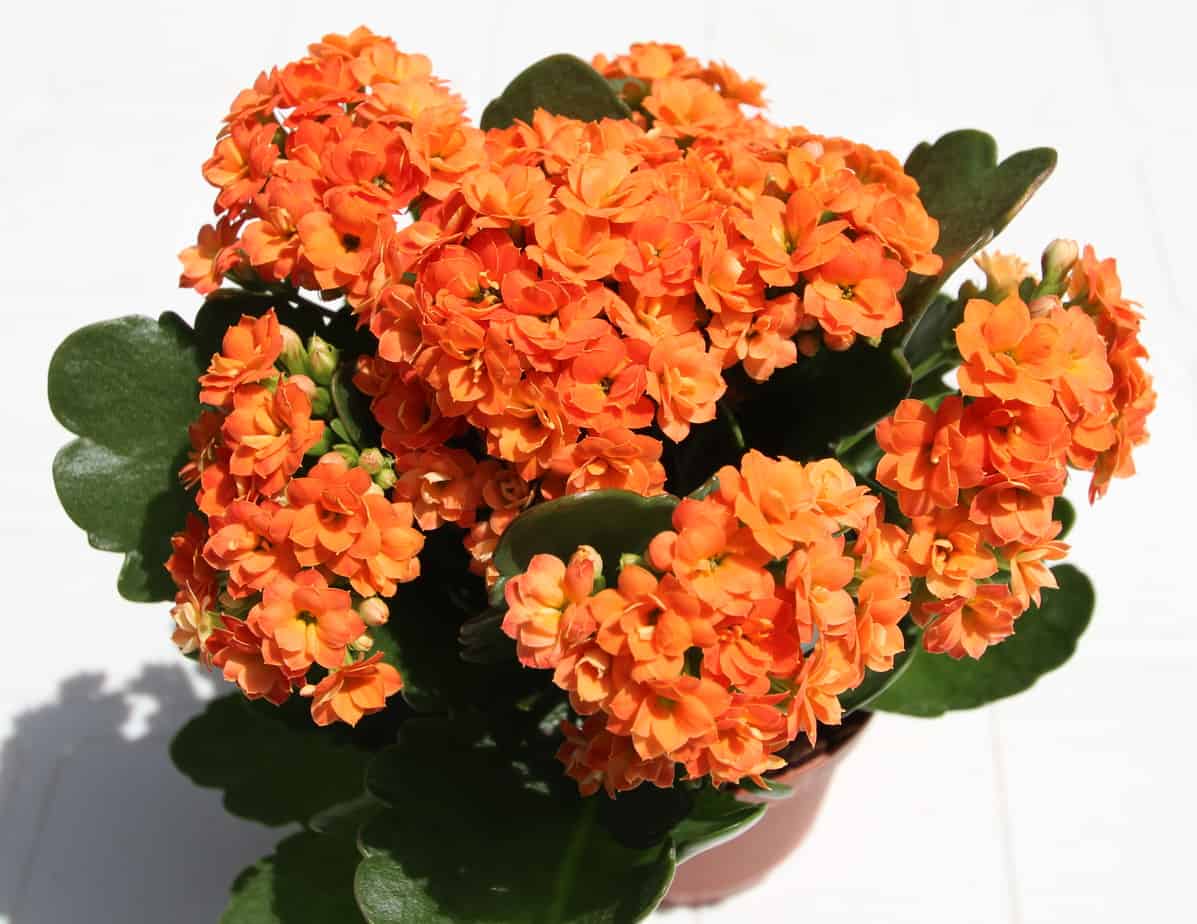
If you want a flowering houseplant in succulent plants needing little water, the Flaming Katy is what you need. While the succulent grows best as an outdoor plant, you can provide them with indoor growing. You find them vast colors when they bloom. It needs a little water and a sunny spot to give you those gorgeous blooms.
How to Grow and Care For Succulents Indoors
It helps if you never undervalue the power of a succulent in your living space. You may think you will never develop a green thumb. But with the proper care for succulents, your indoor greenery might surprise you.
#1 Succulents Thrive in Enough Sunlight
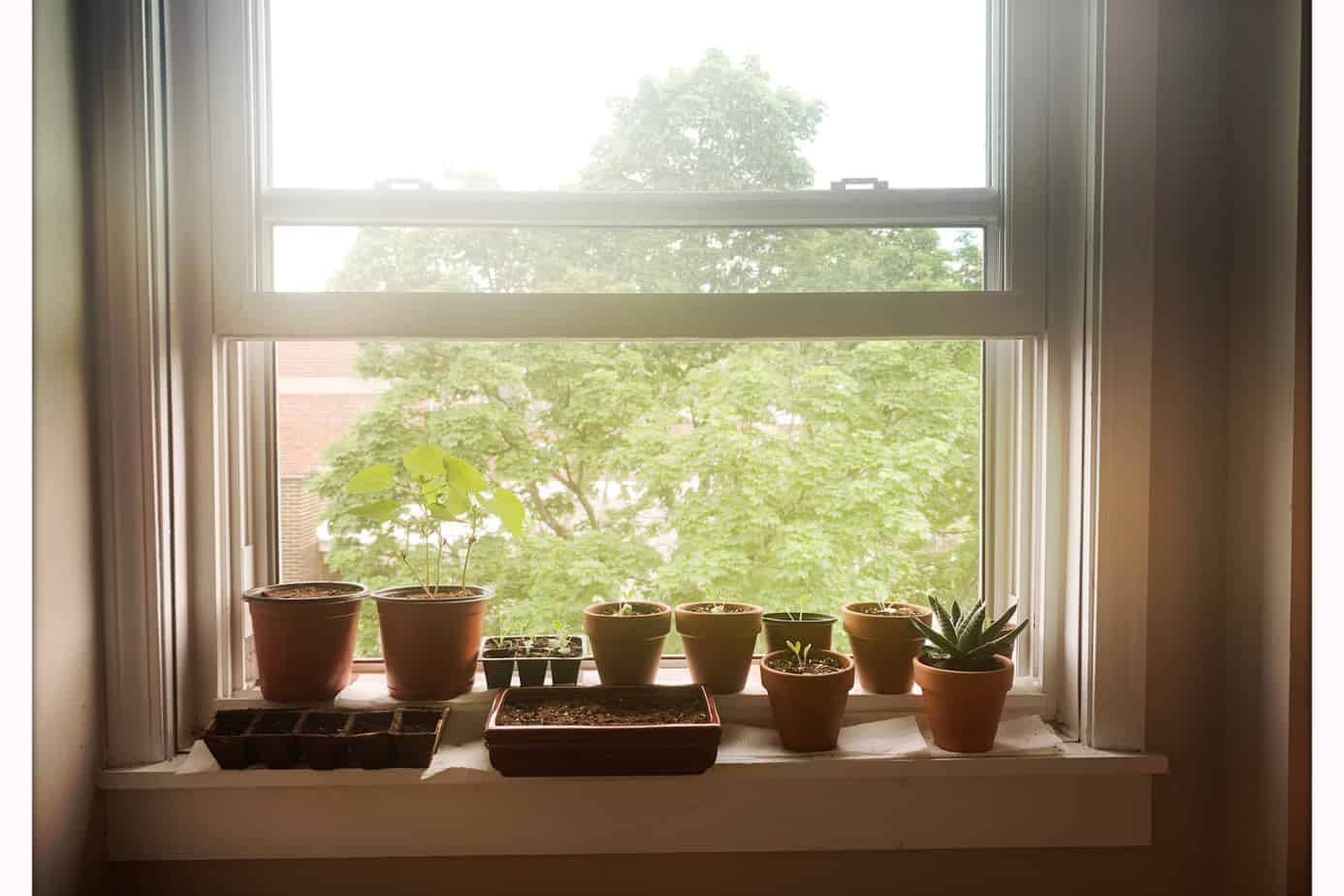
Depending on your indoor greenery, they need at least six hours of sun, but newly planted seedlings need less. First, place new plants in the shade and not direct sun scorching the leaves. Then, gradually introduce them to full sun, keeping them behind a sheer curtain.
#2 Succulents Need Rotating
Yes, your succulents leave love in direct sun, but if you keep it standing in the same spot day in and out, only one side gets enough light. The best is to rotate them often as they lean towards the sun, and rotating keeps them growing straight up.
#3 Choose Containers With Enough Drainage
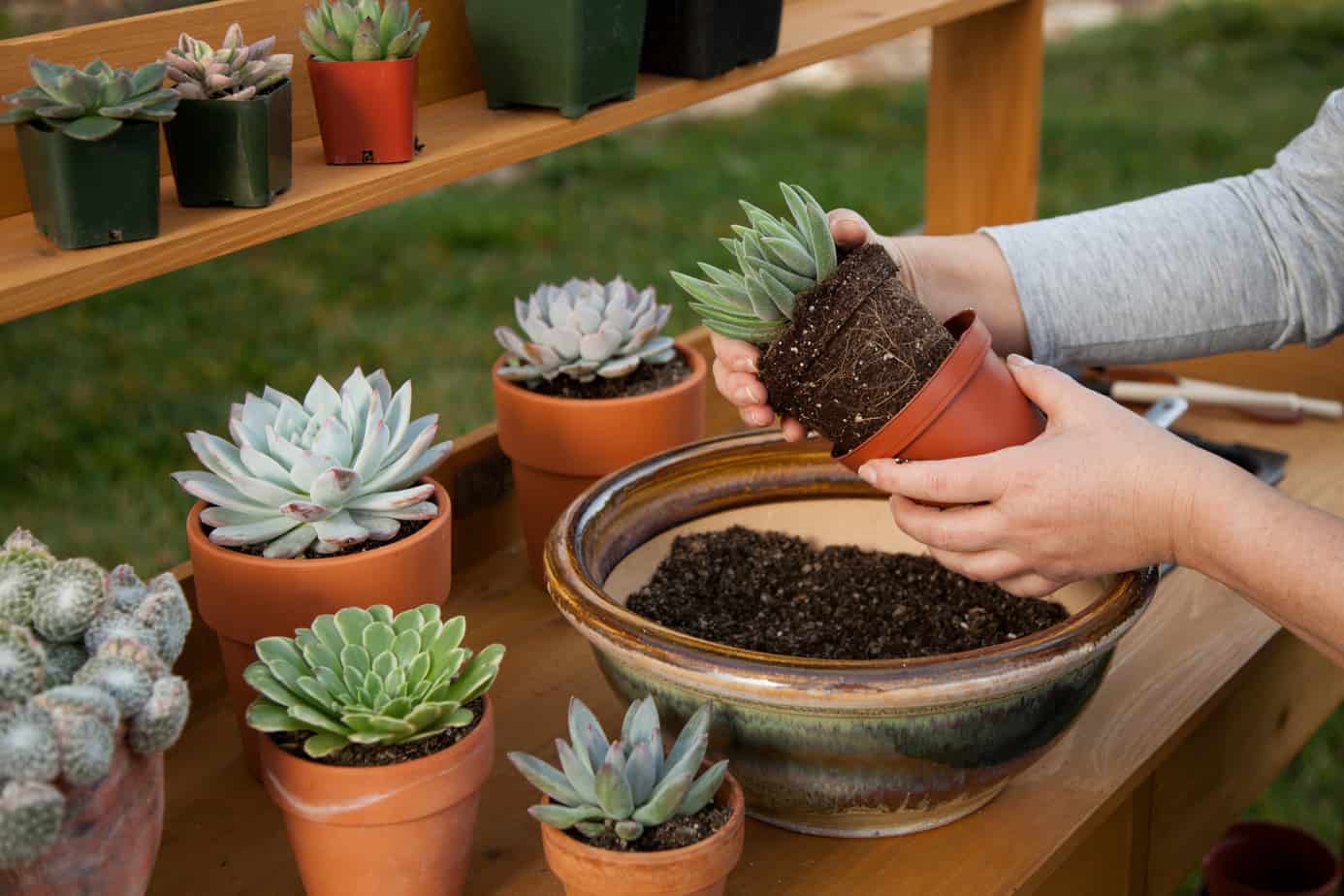
Avoid glass containers for your succulents and instead choose a pot with enough drainage to prevent waterlogging. A good choice is a terra cotta pot.
#4 Water Succulents According To The Season
Your succulents need energy in the time of growth and drink up more water in spring and summer. The opposite happens in fall and winter and needs less water. You can test the soil using your finger and if the top inch is dry, grab that watering can.
When watering your succulents, give the soil a good soak and let the excess water drain from the pot into the sink. If the container has no drainage holes, we recommend watering less. Also, never mist the leaves as they can become moldy.
#5 Choose The Right Potting Soil
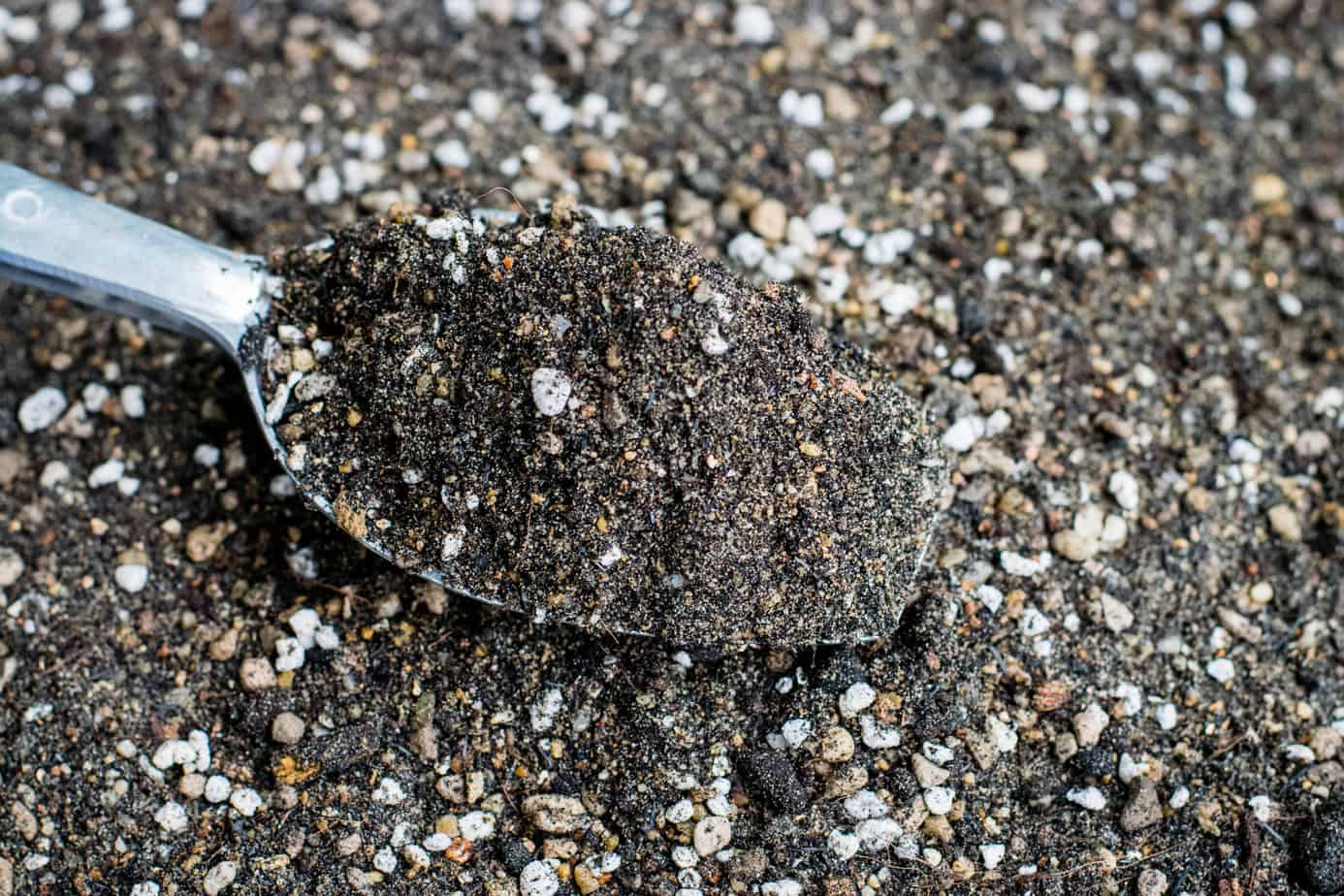
Provide your succulents with suitable soil that drains freely as regular potting soil does not work. Instead, you can use cactus soil or a mix with pumice or perlite mixed with sand. Make sure it has excellent drainage. Also, remember that the roots are fragile, and you need to be gentle with repotting.
#6 Keep Succulents Clean and Pest Free
In most indoor conditions, plants pick up dust. Having dust on the leaves leads to a lack of growth. You can wipe the leaves down with a damp cloth or a soft paintbrush. At the same time, you can deal with any bugs present in your succulent plants.
You may find gnats present when the soil is too moist, and there is no drainage. You can use 70% isopropyl alcohol diluted in water to spray them. Another pest is the mealybug which results from over-fertilizing or overwatering.
You will need to move your infected plants away from the other and use isopropyl alcohol or neem oil.
#7 Do Summer Fertilizing

Summer is the best time to feed your indoor succulents, but they are not big feeders. Still, do not over-fertilize as it makes your plants weak.
Final Thought
We hope that you like the succulent plant collection we chose for you. Now, we know you are wondering where you can get your hands on these gorgeous plants. Well, look no further than right here at Plantly. We have a whole collection of succulents for you to choose from. Happy gardening!
Whether you want to buy, sell or simply reach out to other plant enthusiasts, Plantly is the right place to be!


